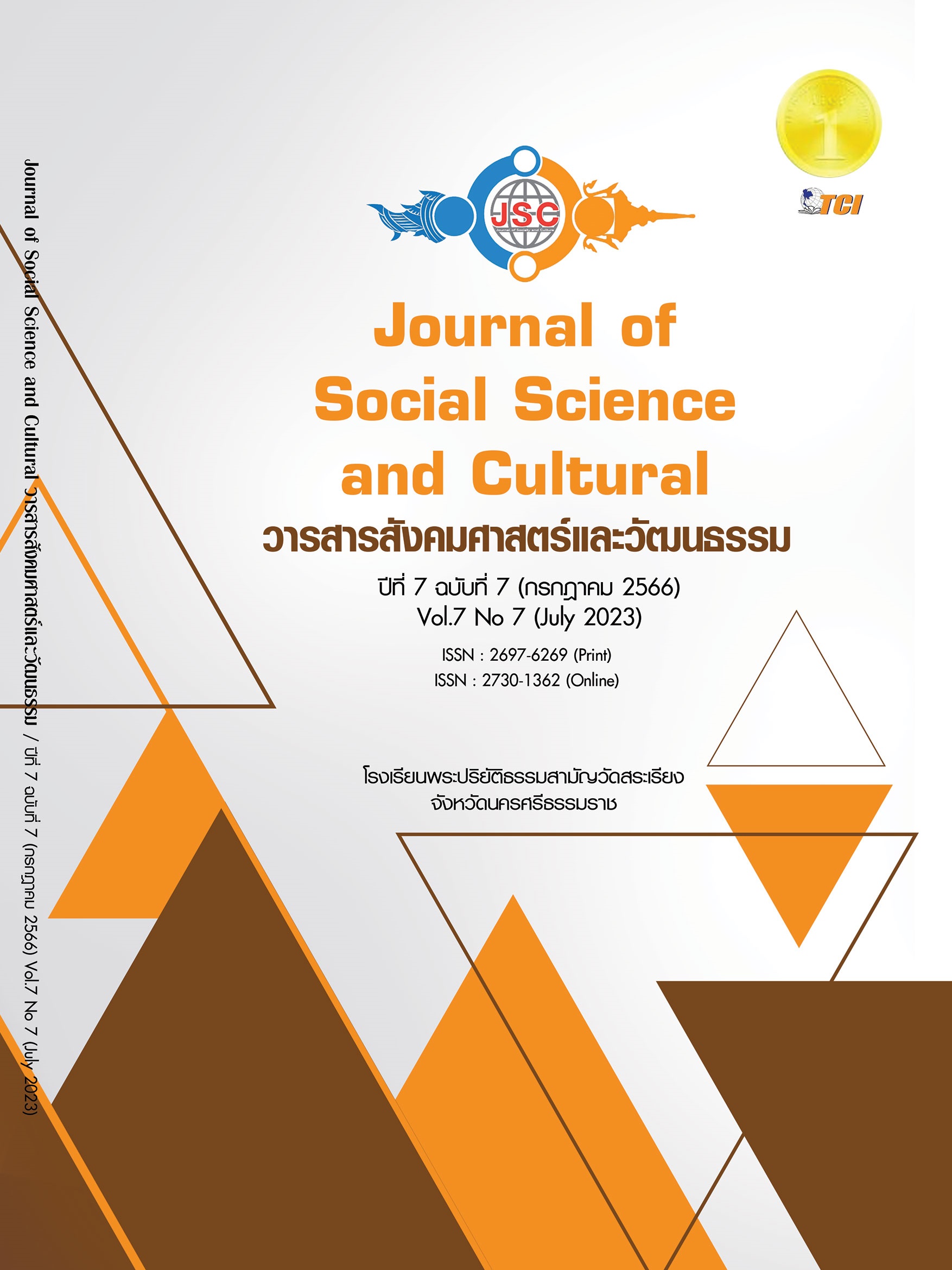ART THERAPY FOR ABUSED CHILDREN AND YOUTH
Main Article Content
Abstract
The situations that Thai children and youth have been abused have been continuously seen. This has been causing the direct impact on children and youth both of their bodies from minor injuries to serious injuries which may lead to the cause of death. There are also mental impacts. The immediate mental impacts are phobia reaction, anxiety, sadness which may cause the long-term mental impacts. Those impacts are self-worthlessness, losing confidence and trust, emotional control defect, anti-social or aggressive behavior as well as the impacts on people and societies around them. After they receive help to be under the responsibilities of relevant agencies both in government sector and private sector, these agencies know how to access to them and how to treat them in their mental situations in the children and youth who are the victims by using psychological therapy. The art therapy is composing of varieties of art activity particularly in painting; for example, drawing and coloring. The development of drawing that is suitable for the age of children and youth. Which is divided into 6 age ranges: 1) one and a half to 3 years old, 2) 3-6 years old, 3) 6-9 years old, 4) 9-12 years old, 5) 12-14 years old, and 6) 14-17 years old. These activities are a kind of therapy which are the ways of treatment in the fundamental of Psychoanalysis through the Projective Drawing Tests. According to communication through drawings, this one is easier than speaking. Therefore, this method is appropriate to be increased in options of help including tender accessibility and treatment in the conditions of mentally abusive children and youth. This also includes in creating gentle atmosphere affecting to mental happiness of the children and youth coming in and asking for help, and reducing in depression, loneliness, and paranoia about harassed experience which these incidents have severely impacted on the victims minds.
Article Details
References
Boonprasop, B. (2012). The effect of drama therapy on emotional intelligence in abused children. In Degree of Master of Science Thesis. Ramkhamhaeng University.
Boonyarit, T. (2015). The study of the develop and process of drama therapy for abused children. In Degree of Master of social work research. Thammasat University.
Boonyasith, W. (2015). Child Abuse. Psychiatry Siriraj DSM-5, (1st edition). Bangkok: Prayoonsarn Printing.
Chaowattanakul, K. et al. (2021). Children and Youth Development Report 2021. Retrieved July 25, 2023, from https://www.dcy.go.th/publication/1646025377379
Chatangam, R. (2017). The creation mixed media art space of happiness : Case study art therapy to deveope concentration in adhd's children. In Degree of Master of fine arts design arts graduate school. Silpakorn University.
Department of Mental Health. (2020). Stunned! Women were subjected to violence in the second half of 2020, a jump of 12%. Retrieved May 11, 2023, from https://www.dmh.go.th/sty_lib/ news/news/view.asp?id=30401
Directory Division. (2012). Art therapy, art heals the mind. In The sunset newsletter. 4, 11 (January-March 2012).
Disayavanich, P. (2001). Drawing for assessment and treatment. Chiang Mai: Chiang Mai Saengsilp Printing House.
Jaruchutarat, Y. (2017). Art therapy to end violence against children and youth in the justice process on the topic of “communicating through art”. Bangkok: Department of Juvenile Observation and Protection.
Kanchanakunjara, S. (2021). Returning Home: Prepareation process of a children and woman violence from emergency hossing. Journal of social work, 29(2), 94-129.
Luangwilai, W. & Kanchanakunjara, S. (2020). The cause of domestic violence against women in the context of Thai society. Retrieved May 11, 2023, from https://publication.npru.ac.th/ jspui/handle/123456789/1159
Ngeeywijit, T. (2001). Measures to resolve, treat, rehabilitate and heal children and youth who commit criminal offenses through art therapy. Rapee Journal, 54(2001), 126-136.
Nrakmangapon, M. (2019). The Effects of Using Artistic Activities to Enhance Attention in the Learning of ADHD Children. Journal of Arts Management, 3(3), 163-172.
Popis, P. (2019). Creating art activities for stress management therapy in juvenile observation and protection centre of suphanburi province. Pattanasilp Academic Journal, 3(2), 45-57.
Siriratraeka, T. (2007). Art Therapy, Science and Art of Healing. Bangkok: Teachers Council Ladprao Printing Hous.
Sukkasem, S. (1995). The effect of artistic activities on the ability to use muscles Small group of students with intellectual disabilities at the early childhood level. In Degree of Master of Education. Srinakharinwirot University.


